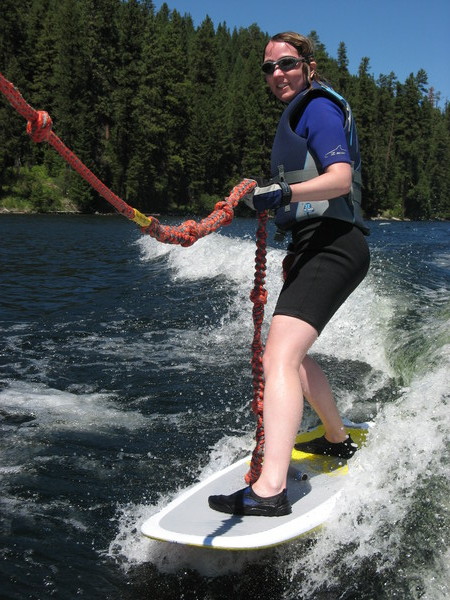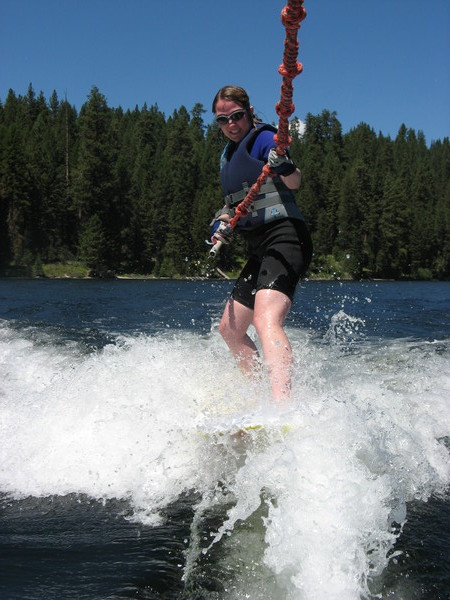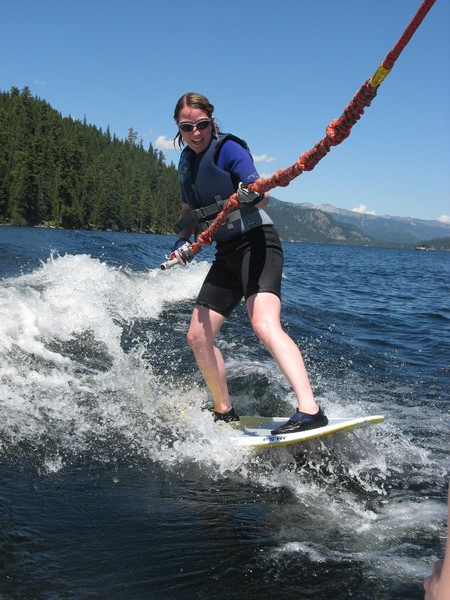August 28th, 2010 at 5:15 am (Food)
 I recently rediscovered a favorite Australian candy bar of mine, Violet Crumble. It’s made of “honeycomb” on the inside and coated with a thin layer of chocolate. The chocolate provides not only flavor but also function: honeycomb is hygroscopic (absorbs water from the air), and the chocolate forms a barrier to keep water out (and the honeycomb dry and crunchy).
I recently rediscovered a favorite Australian candy bar of mine, Violet Crumble. It’s made of “honeycomb” on the inside and coated with a thin layer of chocolate. The chocolate provides not only flavor but also function: honeycomb is hygroscopic (absorbs water from the air), and the chocolate forms a barrier to keep water out (and the honeycomb dry and crunchy).
Browsing the food label highlighted some interesting differences between Australia’s take on nutrition and our own. Most of the information is the same, although metric units are used (naturally) and energy is listed in kilojoules rather than calories. The ingredient list caught my eye because it associates a percentage with each item, something I’ve never seen in the U.S. And in this case, Violet Crumble was listed as being 59% chocolate and 40% honeycomb. As you can see from the picture, this clearly is not determined by their volume, but rather something else. I determined via google that these percentages are based on “ingoing weight” (prior to cooking/baking/mixing/preparing).
My candy bar is 17 cm long by 3.5 cm wide by 2.2 cm high (on average), for a total volume of 130.9 cm3. The chocolate layer appears to be about 1 mm thick, yielding a shell volume of ~21 cm3, leaving ~110 cm3 for the honeycomb. The whole bar weighs 50 g, so if we apportion weight using the above percentages, that’s 29.5 g of chocolate and 20 g of honeycomb. We can then determine the density of each, yielding 1.4 g/cm3 for chocolate and 0.18 g/cm3 for honeycomb. The only relevant density report I could find online is a figure of 1.325 g/cm3 for semi-sweet chocolate, so this at least seems reasonable. And just think, all this was possible because Australians include percentages in their ingredient lists!
3 Comments
3 of 3 people learned something from this entry.
August 25th, 2010 at 5:34 am (Travel)
I have a thing for trains, so it’s a real pleasure to try them out in a new city and discover a well run, clean, on-time, easy-to-use system. Sydney’s CityRail system certainly qualifies! I’ve ridden it a few times so far this trip and in addition to getting where I wanted to go, I observed some cool innovations.
 First, the trains are double-decker. And who doesn’t enjoy being up high?
First, the trains are double-decker. And who doesn’t enjoy being up high?
Second, the seat backs flip to face forward or backward on a central pivot, so it’s easy for any passenger to change the direction of the seating depending which way the train is going. These are designed to pivot (up/forward or down/backward) in place, without banging into adjoining seats. Very clever.
Most impressively, the escalators down to the subway level have adaptive speed. At first I thought I was imagining the fact that the escalators seemed to be running at different speeds at different times. Then I realized that it was moving faster when a person was on it and slower when unoccupied. I tested this a few times observationally, then went and got on it myself when it was in its slow state. Sure enough, it sped up when I stepped on. The speed transition is so smooth that I hadn’t noticed it the times I’d been on the escalator before! This is brilliant, and apparently saves a lot of energy. I get the impression that it may not be at all new — it’s just the first time I’ve encountered it!
Thank you, Sydney — and bring on more neat discoveries!
1 Comments
1 of 1 people learned something from this entry.
August 5th, 2010 at 7:02 pm (Productivity, Psychology)
Wikipedia has an entry describing burnout, specifically in the work context. (It’s not really relevant how I ended up there. Right.) I learned that there is a “well studied measurement of burnout” called the Maslach Burnout Inventory. It makes use of a “three dimensional description of exhaustion, cynicism, and inefficacy”. Maslach originally characterized burnout for professions such as psychology and social work, in which those experiencing burnout can not only be ineffective but start to view their patients or clients in a depersonalized or dehumanized way. But anyone in any profession can suffer ill effects from reaching unbearable levels of frustration and exhaustion. A later study showed that the MBI had “sufficient fit” as a descriptive/diagnostic tool for various occupations, except for those in advertising (hm?).
While the MBI itself is only available by purchase, you can take a quick self-test to get an idea of your burnout level (if it isn’t already obvious to you). The same site also provides tips on avoiding burnout. The one that resonated most with me was advice to “protect the parts of your job that give you meaning and satisfaction.” When too much of your time is swallowed up in the dreck that provides no satisfaction, but from which you cannot escape, you automatically ratchet up the burnout scale. It’s good to be reminded that taking time to focus on the parts you really enjoy benefits everyone you work with, not just you.
2 Comments
2 of 2 people learned something from this entry.
August 3rd, 2010 at 11:23 pm (Sports, Swimming)
Building on my initial success with learning to wakesurf, the following day I got some more practice and found it to be easier and easier. I’m still no pro, but I managed to stay up for an entire minute on at least one run, and I even dared to cross the wake!



This turned out not to be as tricky as I thought. I just leaned a little back into my heels, the board climbed up onto the wake, and I held tightly to the rope while froth rushed over my ankles. Then I dipped into my heels again and the board slid down the far slope into the other side of the wake. The trick was to do all of this gradually without overcorrecting for the slope changes! My posture and confidence have both improved a bit, and I’m doing much better at keeping slack in the rope. I was even able to let go with one hand and wave at the boat!
The idea ultimately is to be able to let go of the rope entirely and just surf on the wake behind the boat. The rope isn’t really towing you anyway (except atop the wake where there’s no wave to ride down); it’s just there for balance and positional correction. I did get to see the no-rope version performed, and I’d love to get to that point myself! It’s fascinating to see the balance in forces between the rider’s weight on the board pushing down and the rush of the wake-wave curling up. But first I need to be able to start on my own… to date I’ve still had someone holding the board steady for me during those first critical seconds of getting onto the water. But I think that may be an achievable goal! No-rope wakesurfing… that’ll take a lot more practice.
1 Comments
1 of 1 people learned something from this entry.
 I recently rediscovered a favorite Australian candy bar of mine, Violet Crumble. It’s made of “honeycomb” on the inside and coated with a thin layer of chocolate. The chocolate provides not only flavor but also function: honeycomb is hygroscopic (absorbs water from the air), and the chocolate forms a barrier to keep water out (and the honeycomb dry and crunchy).
I recently rediscovered a favorite Australian candy bar of mine, Violet Crumble. It’s made of “honeycomb” on the inside and coated with a thin layer of chocolate. The chocolate provides not only flavor but also function: honeycomb is hygroscopic (absorbs water from the air), and the chocolate forms a barrier to keep water out (and the honeycomb dry and crunchy).


